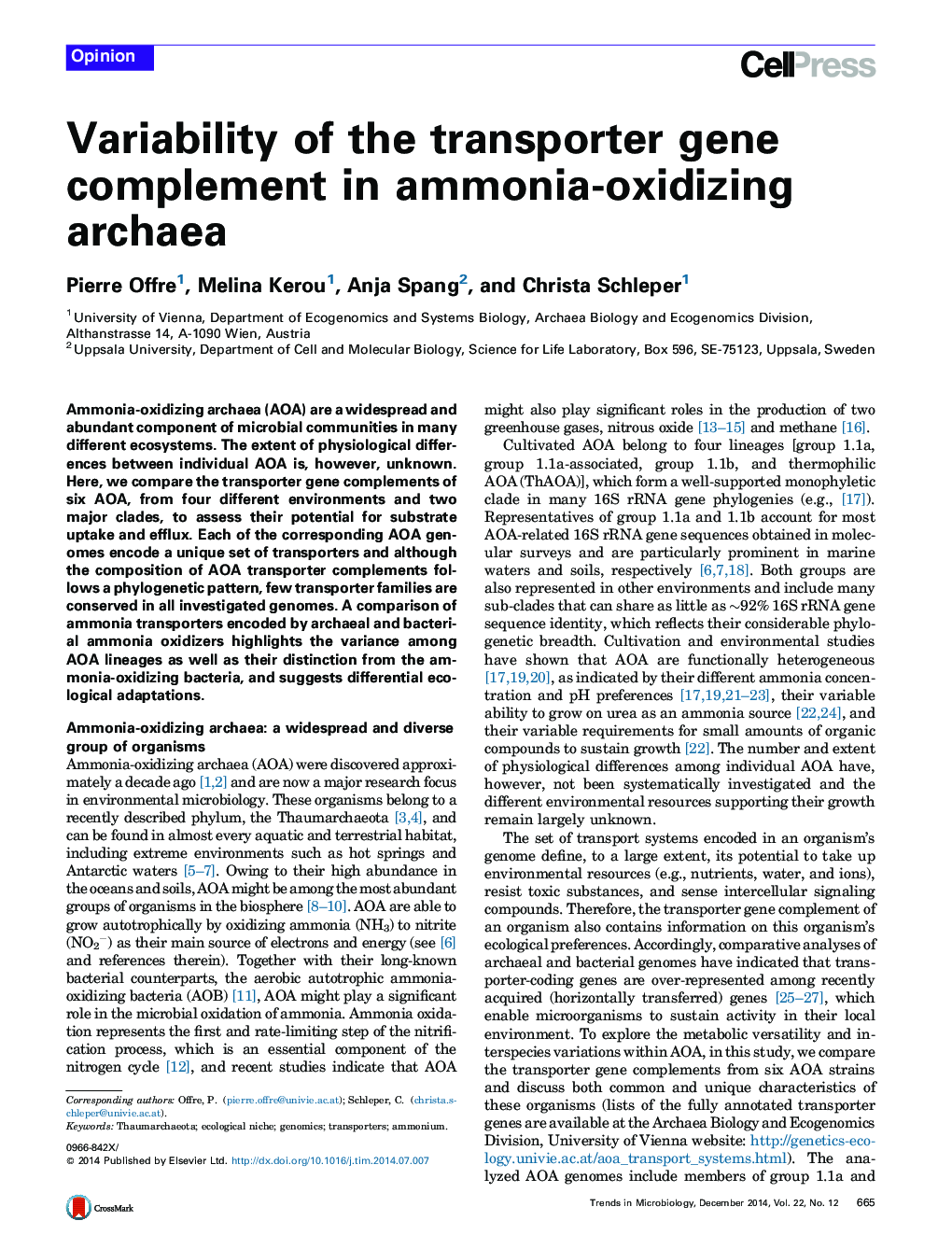| Article ID | Journal | Published Year | Pages | File Type |
|---|---|---|---|---|
| 3422027 | Trends in Microbiology | 2014 | 11 Pages |
•The potential for substrate uptake differs among ammonia-oxidizing archaea (AOA), as suggested by their transporter gene complements.•Evolutionary relatedness primarily determines the AOA transporter gene complement composition.•Analyzed AOA encode two types of ammonia channel transporters (AMTs) with different functions.•The molecular and genetic differences between AMTs encoded in ammonia-oxidizing bacteria (AOB) and AOA genomes may reflect the differential environmental adaptations among these microbial groups.
Ammonia-oxidizing archaea (AOA) are a widespread and abundant component of microbial communities in many different ecosystems. The extent of physiological differences between individual AOA is, however, unknown. Here, we compare the transporter gene complements of six AOA, from four different environments and two major clades, to assess their potential for substrate uptake and efflux. Each of the corresponding AOA genomes encode a unique set of transporters and although the composition of AOA transporter complements follows a phylogenetic pattern, few transporter families are conserved in all investigated genomes. A comparison of ammonia transporters encoded by archaeal and bacterial ammonia oxidizers highlights the variance among AOA lineages as well as their distinction from the ammonia-oxidizing bacteria, and suggests differential ecological adaptations.
